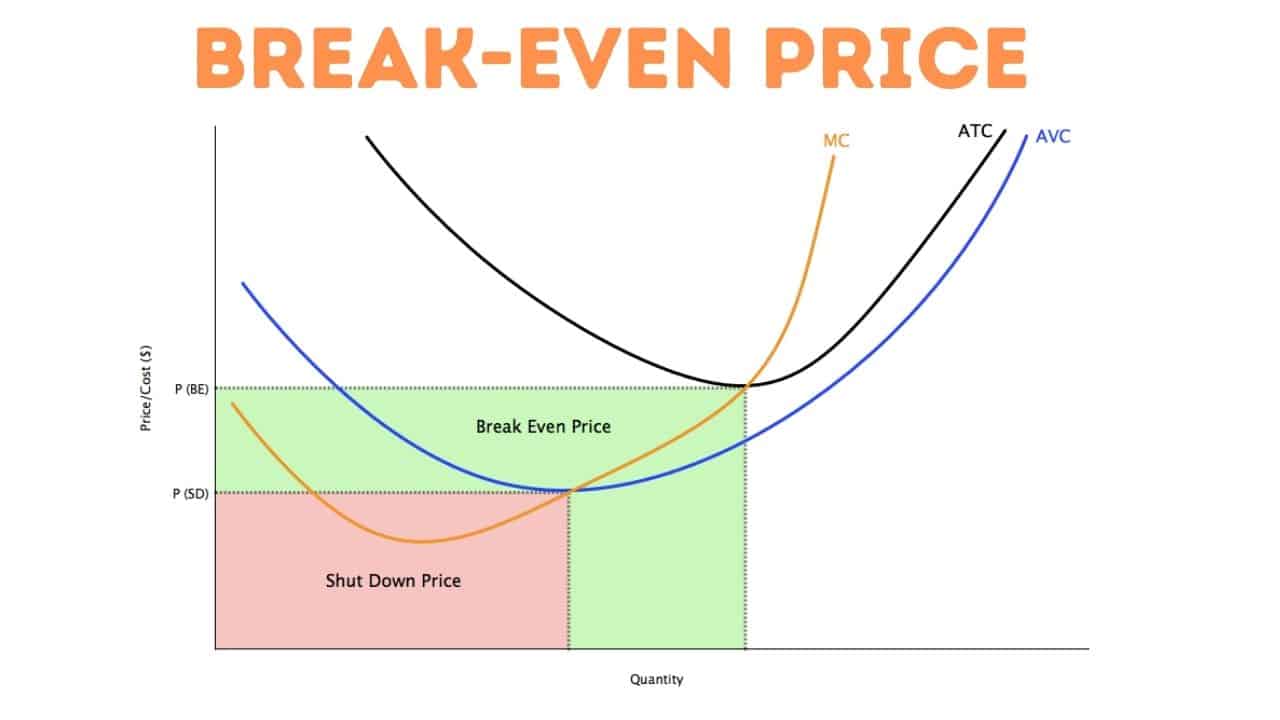A market structure refers to the organizational characteristics of a market that determine how the supply and demand for a product or service interact with each other. There are four popular types of market structures, including perfect competition, monopolistic competition, oligopoly, and monopoly. Each market structure has its unique features, such as the number of competitors, the degree of product differentiation, and the level of barriers to entry and exit. Examples of market structure can be found in various industries and sectors, such as healthcare, finance, and technology. In this article, you will know what market structure is, the types, features, and examples. You will understand why market structure is essential for businesses and policymakers, as it can affect competition, pricing, innovation, and overall market efficiency.
What is Market Structure?
Market structure refers to the organizational characteristics and arrangements of a market that determine the behavior and interactions of buyers and sellers. It describes the degree of competition, the number and size of firms operating in the market, the nature of the products or services offered, and the barriers to entry and exit.
Market structures have distinct features and implications. Perfect competition promotes price efficiency and for many small firms realistic competition allows for product differentiation and some pricing power. Oligopolies involve strategic interactions among a few dominant firms, leading to complex competitive dynamics. Monopolies can result in reduced consumer welfare due to limited competition.
Understanding market structures helps policymakers design appropriate regulations, assess market power, and promote competition. For businesses, it helps determine pricing strategies, market positioning, and competitive advantages. Consumers benefit from a well-functioning market structure as it encourages innovation, lowers prices, and offers a wider range of choices. Different industries and sectors may display different market structures.
Economics Market Structure
Economics Market Structure refers to the competition and organizational characteristics that define how supply and demand for goods and services interact in a market. It is the degree of competition and power dynamics inherent in a market that determine how prices and resource allocation are determined in industries. There are four widely recognized types of market structures, including perfect competition, monopolistic competition, oligopoly, and monopoly, each with its unique features and effects on market outcomes.
Perfect competition occurs when many small firms sell identical products, and there are no barriers to entry or exit. In such a market, firms have no market power, and prices are determined by market supply and demand.
Monopolistic competition exists within an industry where firms sell differentiated products with a degree of market power. Firms in monopolistic competition have some control over pricing, and products can be marketed and advertised to create brand loyalty.
Oligopoly describes a market with a small number of large firms that can influence prices through strategic behaviors such as price fixing or creating entry barriers to new firms.
Monopoly is a market structure characterized by a single firm that controls the market. This usually occurs when there are significant barriers to entry into the market. Monopolies often lead to higher prices and lower output levels.
Micro Market Structure
Micro market structure refers to the organization and characteristics of individual markets at a smaller scale, focusing on the interaction between buyers and sellers of specific goods or services. It is a subfield of economics that analyzes the behavior of individual firms, consumers, and market outcomes within specific industries or product markets.
Micro market structure analysis provides insights into the competitive landscape, market power, consumer behavior, and overall market performance. It helps firms make strategic decisions regarding price by production, and market entry. Policymakers can use micro market structure analysis to assess the need for regulatory intervention. They can also use antitrust measures, or Hindustan try-specific policies to ensure fair competition and protect consumer welfare.
Features Micro Market Structure
#1. Market Concentration
Market concentration measures the extent to which a market is dominated by a few large firms or many small firms.
#2. Product Differentiation
Product differentiation refers to the extent to which firms in a market offer products that are distinct from one another.
#3. Entry and Exit Barriers
Entry barriers are obstacles that make it difficult for new firms to enter a market. Exit barriers make it challenging for firms to leave the market.
#4. Pricing Strategies
Micro market structure analyzes the pricing strategies employed by firms within specific markets.
#5. Market Dynamics
Micro market structure also considers the dynamics of market interactions, including supply and demand forces. They monitor market equilibrium, and market outcomes such as price determination, quantity sold, and market efficiency.
What are the Types of Market Structure?
There are several types of market structures:
#1. Perfect Competition
In a perfectly competitive market, many small firms sell identical products. The market is characterized by easy entry and exit, perfect information, and price-taking behavior; firms have no control over prices. Examples include agricultural markets with numerous farmers selling standardized crops.
#2. Monopolistic Competition
The monopolistic competition features many firms, but they sell differentiated products, creating product diversity and some degree of market power. Each firm has a certain level of control over its prices and faces low barriers to entry.
#3. Oligopoly
Oligopoly occurs when a small number of large firms dominate the market. These firms often have significant market power and interdependence, their actions affect each other’s profits. Entry barriers are high.
#4. Monopoly
A monopoly exists when a single firm controls the entire market, offering a unique product or service with no close substitutes. The monopolistic firm has substantial market power, allowing it to set prices and limit output.
Monopoly as a Market Structure
Monopoly is a market structure characterized by a single firm that holds exclusive control over the entire market for a particular product or service. It is the opposite of perfect competition, where many small firms are operating in the market.
In a monopoly, the firm faces no competition, allowing it to have significant market power. The monopolistic firm becomes the sole provider of the product or service, and there are no close substitutes available to consumers. This gives the firm the ability to control prices and determine the quantity of output supplied to the market. Antitrust laws may be implemented to prevent or control monopolistic practices, promote market entry, and encourage competition.
Key Features of a Monopoly Market Structure
#1. Lack of Competition
A monopoly is the only seller in the market, eliminating direct competition. This absence of rivals gives the firm considerable control over pricing and market conditions.
#2. High Barriers to Entry
Monopolies often arise due to significant barriers that prevent new firms from entering the market.
#3. Market Power
The monopolistic firm has the power to dictate prices and output levels. It can set prices at a level that maximizes its profits, potentially leading to higher prices for consumers.
#4. Price Discrimination
Monopolies may engage in price discrimination, where they charge different prices to different groups of consumers based on their willingness to pay.
#5. Lack of Substitutes
Since there are no close substitutes available, consumers have limited options and must purchase the monopolistic firm’s product or service.
What is an Example of a Monopoly?
An example of a monopoly is the De Beers Group in the diamond industry. For many years, De Beers held a dominant position as the sole supplier of rough diamonds. The company was controlling a significant portion of the global diamond market. De Beers’ monopoly power was established through various means, including controlling diamond mining operations and purchasing and stockpiling diamonds. It was leveraging long-term contracts with diamond producers worldwide.
The company also implemented an aggressive marketing strategy to create the perception of diamonds as rare and valuable. With its control over the majority of the world’s diamond supply, De Beers could influence diamond prices. It could limit competition, and dictate terms to diamond producers and buyers. The company played a pivotal role in setting industry standards and establishing the diamond engagement ring tradition.
Oligopoly Market Structure
Oligopoly is a market structure in which only a few large firms hold a significant share of the market.
Characteristics of an Oligopoly Market Structure
#1. Few Large Firms
Typically, in an oligopolistic market, only a small number of firms have a significant share of the market.
#2. Interdependence
The actions of one firm can have a significant impact on the other firms in the market, making them interdependent.
#3. Barriers to Entry
In many cases, an oligopoly market may face significant barriers to entry, making it difficult for new firms to enter the market and compete with established firms.
#4. Product Differentiation
Firms in an oligopolistic market may differentiate their products to gain a competitive advantage, leading to brand loyalty among consumers.
What is an Example of an Oligopoly?
An example of an oligopoly is the global smartphone industry. This industry is dominated by a small number of large firms that control a significant portion of the market and compete with each other.
These firms have substantial market power and influence over the industry. This is due to their brand recognition, technological advancements, and extensive distribution networks. They invest heavily in research and development, and their products often have distinct features and functionalities.
What is the Market Structure Strategy?
Market structure strategy is the approach adopted by firms to navigate the characteristics and dynamics of the market where they operate. It can refer to the strategic decisions and actions taken by firms within a specific market structure. They take this decision to achieve their business objectives and gain a competitive advantage.
The market structure strategy encompasses several elements, including:
#1. Positioning
Firms need to determine their market positioning within the given market structure. By positioning themselves effectively, firms can attract and retain customers in the market.
#2. Pricing
Pricing strategy plays a crucial role in market structure strategy. Firms need to consider factors such as the level of competition, demand elasticity, and market power to determine optimal pricing.
#3. Product Differentiation
Differentiating products or services is an essential aspect of market structure strategy, especially in markets characterized by monopolistic competition or oligopoly.
#4. Competitive Advantage
Firms aim to develop and leverage competitive advantages within their market structure.
#5. Market Entry and Expansion
Market structure strategy also involves decisions related to entering new markets or expanding within existing ones.
What are the 4 Major Market Forces?
The four major market forces are supply and demand, competition, government regulations, and technological advancements. These forces play significant roles in shaping market dynamics and influencing the behavior of buyers and sellers.
- Supply and Demand: The interplay between supply and demand determines the equilibrium price and quantity in a market. When supply exceeds demand, prices tend to decrease, while when demand surpasses supply, prices typically increase. Changes in supply and demand can lead to shifts in market conditions and affect prices and quantities exchanged.
- Competition: Competition refers to the rivalry among firms in a market as they vie for customers and market share. Competitive markets typically result in the efficient allocation of resources and better consumer choices.
- Government Regulations: Governments intervene in markets through regulations to protect consumers, promote fair competition, and maintain market stability. Government policies and regulations shape market behavior and outcomes.
- Technological Advancements: Technological advancements have a profound impact on markets, affecting production methods, product development, and communication channels. Technological innovations can create new markets, disrupt existing industries, lower costs, and improve efficiency.
Conclusion
In the smartphone industry, firms engage in strategic interactions with each other. They monitor competitors’ actions, pricing strategies, and product innovations to gain a competitive edge. Oligopolistic behavior is observed in the form of pricing wars, product differentiation, and aggressive marketing campaigns. Barriers to entry in the smartphone market are high. New entrants face challenges such as substantial initial investments, the need to establish a strong brand presence, and access to distribution channels. As a result, the market is primarily dominated by established players, forming an oligopoly.
Each market structure exhibits distinct features that affect market behavior and outcomes. Perfect competition promotes price equilibrium and efficiency due to intense competition and low barriers to entry. Monopolistic competition allows for product differentiation and some degree of market power for firms. Oligopoly leads to strategic interactions among a few dominant firms, which can result in collusion or intense competition. Monopoly grants the controlling firm substantial market power, enabling them to set prices and limit output, potentially leading to reduced consumer welfare. Each market structure presents distinct features and examples, shaping the dynamics of the market and impacting both buyers and sellers.
Related Articles
- MONOPOLY COMPANIES IN THE UNITED STATES
- MONOPOLIES: Examples, How It Works & Why
- MONOPOLISTIC MARKET: Overview, Characteristics & Examples
- PRODUCT MARKET: Meaning, Examples, Market Fit, Survey, and Differences






